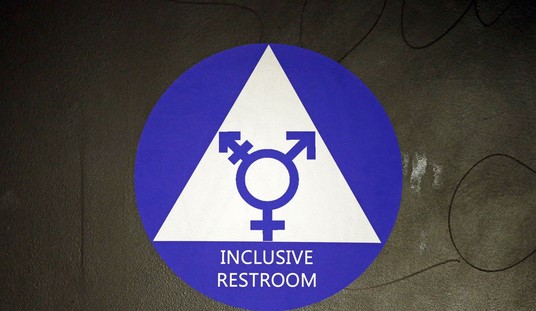The Supreme Court Steps In
The United States Supreme Court (SCOTUS) issued a temporary administrative stay, giving Texas a critical early win, restoring the state's new congressional map while the legal fight continues.
Things happened fast: The order arrived just hours after the request reached Washington, reflecting how quickly the filing window approached and how disruptive sudden changes would've been.
The stay puts the lower court's ruling on hold, allowing campaigns to move forward under the Legislature's design until the Justices decide what comes next.
Broader constitutional questions weren't answered, but the decision pauses the enforcement of the injunction, narrowing the immediate pressure on counties, candidates, and election administrators.
The stay also signals that the Court believes the state raised issues significant enough to deserve more time before any map is locked in place.
Why Texas Views the Stay As Momentum
State officials in Texas maintain that the Legislature acted within its constitutional authority to redraw districts based on political considerations, voting behavior, and regional patterns, not race, arguing that abrupt mid-cycle changes would disrupt the upcoming election and trigger confusion across the state. The stay backs that position by giving the Legislature's map room to function during the early stages of the cycle.
The newly redrawn districts reflect genuine political geography, as supporters point out, allowing conservative candidates to compete in regions where trends have shifted.
The map aims to produce as many as five additional Republican seats, which remains a significant reason Texas pressed for immediate relief while the case moves along.
Why the Lower Court Rejected the Map
Deciding that race shaped core decisions in drawing several districts, the federal panel initially blocked the map; judges examined internal communications and public statements from lawmakers, finding a pattern they believed weakened minority voting strength.
The ruling cited specific divisions in communities that historically voted as cohesive blocs, and viewed the new boundaries as a direct attempt to dilute their influence.
These are the findings that remain the foundation of the ongoing challenge: The Court's stay doesn't dismiss them, it simply prevents the ruling from taking effect during the critical pre-election period.
There are more profound constitutional questions surrounding intent, race, and political strategy that remain front and center until the Justices weigh them more fully.
A Fight With National Reach
This case casts a significant shadow, because incremental changes in a state the size of Texas shift the entire balance in the House. The contested map could deliver several conservative-leaning seats, helping secure the narrow Republican majority, raising the stakes and pushing the dispute beyond a local argument over district boundaries into the broader national arena.
Redistricting doesn't operate in isolation; when a state of Texas redraws its lines in the middle of a decade, political inertia quickly sets in. A map that survives the filing deadline often shapes multiple cycles, which is why the temporary stay matters so much — it protects the Legislature's political roadmap while the case proceeds, and prevents an immediate swing in several contested seats.
What The Court May Do Next
This administrative stay is only step one: The Court can extend it to a full stay pending appeal, leave the decision to the lower courts while keeping the order in place, or take the case directly for a more comprehensive ruling. Each option carries a different outcome for campaigns already preparing for the cycle.
The tight timeline drove the emergency request, and now that those deadlines are stabilized, the Court can examine the deeper issues at a more deliberate pace.
Although the stay doesn't foretell the final ruling, it does indicate that the Court sees sufficient complexity to avoid immediate enforcement of the lower court's findings.
If Texas Ultimately Loses
Texas would need to revert to its earlier map if the Court eventually upholds the lower panel's judgment, an outcome that would erase several expected Republican gains, forcing campaigns to overhaul strategy in a compressed window. A decision such as this would require adjustment to fundraising plans, voter targeting, and district-specific outreach efforts.
The stay delays that upheaval, but it doesn't eliminate the possibility.
This outcome helps determine how aggressively legislatures around the country redraw their own districts over the decade. The Court's early move signals that timing, process, and election stability count heavily when judges weigh whether to stop a map that's already in motion.
Final Thoughts
The Supreme Court's decision doesn't settle the fight, but it does shift the entire trajectory, giving Texas time to build a stronger legal position as the cycle begins.
With the looming lower court's findings, the constitutional questions at the heart of the case remain unresolved; yet the stay reflects a truth about redistricting in America, where power often hinges on timing, and timing determines which political map becomes reality.
Even though upcoming stages will move more slowly, the outcomes don't lose their overall significance. The court will decide how far states can go when political ambition, demographic change, and constitutional limits collide inside the lines that shape national power.
If you want the inside track on what the Supreme Court’s stay means for Texas, Congress, and the next election cycle, you’ll find that deeper dive inside PJ Media VIP. We're covering the long game here, the real legal stakes, and the political maneuvers that rarely break into public view.
Join us and support work that stays honest, direct, and unafraid. You can sign up right here through PJ Media VIP and keep these columns going with full access to every update.










Join the conversation as a VIP Member